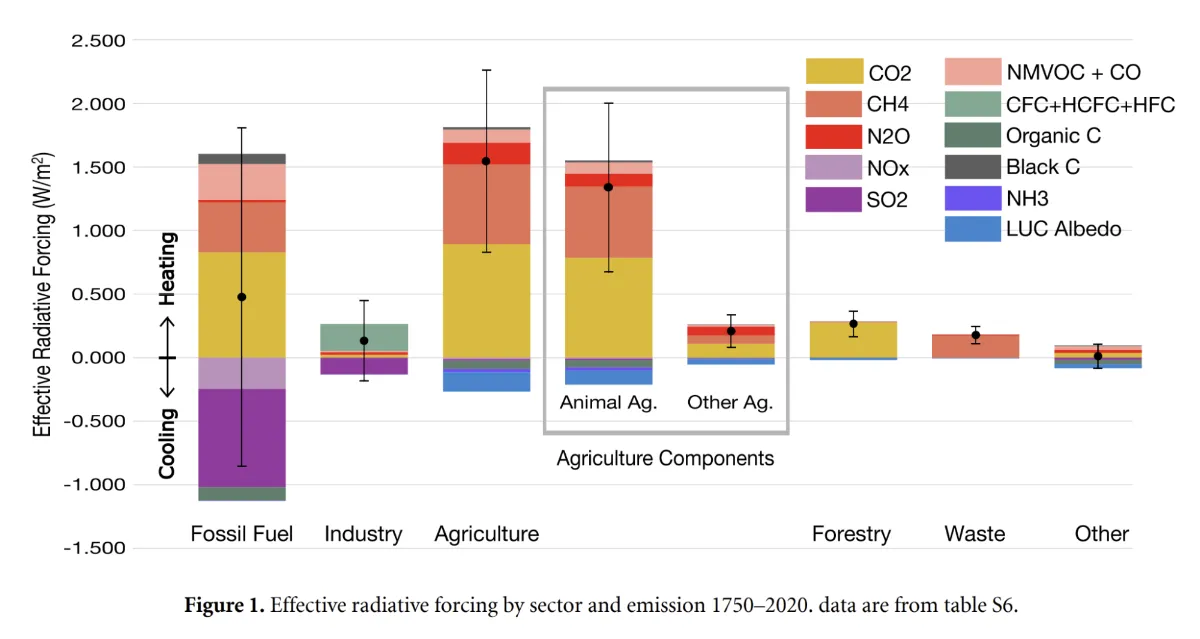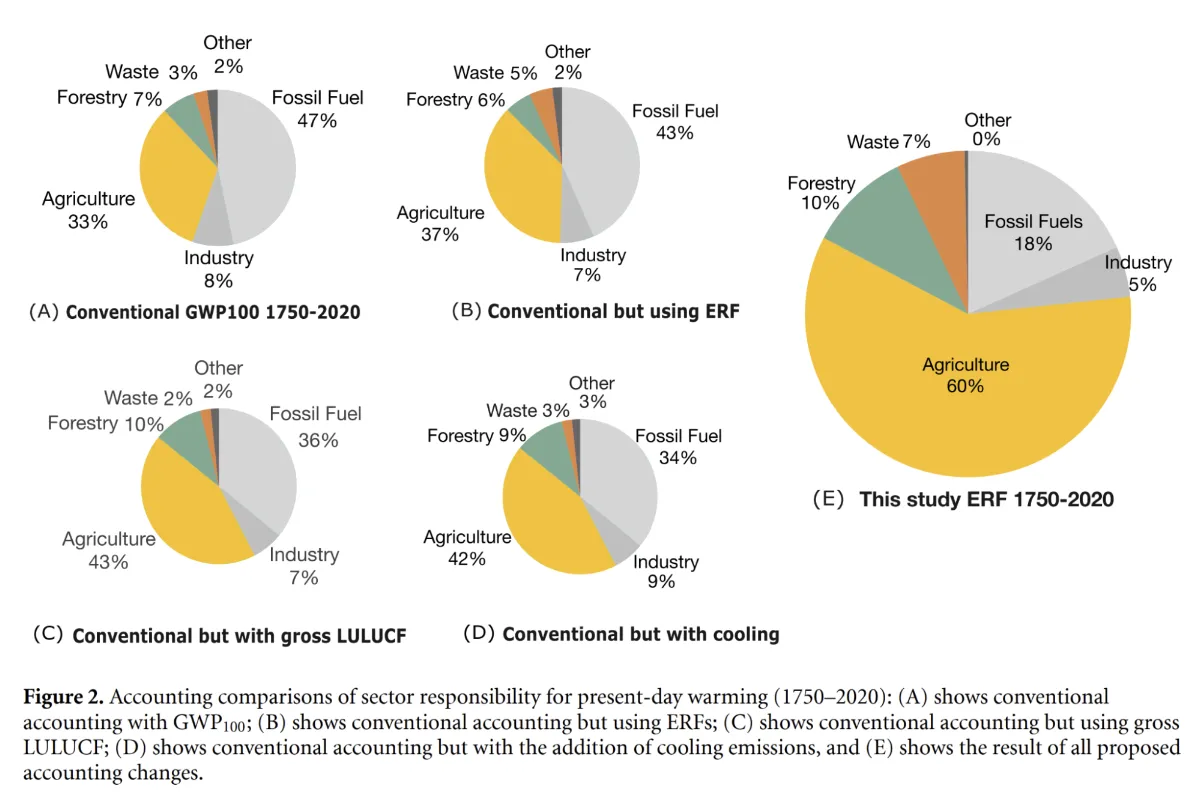A summary of “Increased transparency in accounting conventions could benefit climate policy”
Patrick Medlicott - 9th June 2025
I would like to discuss an article from Environmental Research Letters. The author is Gerrard Wedderburn-Bisshop,and he writes for the World Preservation Foundation. The title of the article is ”increased transparency in accounting conventions could benefit climate policy”.

Dr Wedderburn-Bisshop is a climate scientist from Australia, and has done a lot of work related to animal agriculture and deforestation - especially in Queensland.
This is an open access article, and was published 11 March 2025.
I quote the abstract in full.
Greenhouse gas accounting conventions were first devised in the 1990s to assess and compare emissions. Several assumptions were made when framing conventions that remain in practice, however recent advances offer potentially more consistent and inclusive accounting of greenhouse gases. We apply these advances, namely: consistent growth accounting of carbon dioxide sources; linking land use emissions with sectors; using emissions based effective radiative forcing(ERF) rather than global warming potentials (GWP) to compare emissions; including both warming and cooling emissions, and including loss of additional sink capacity. We compare these results with conventional accounting and find that this approach boosts perceived carbon emissions from deforestation, and finds agriculture, the most expensive land user, to be the leading emission sector and to have caused 60%(32% to 87%) of ERF change since 1750. We also find that fossil fuels are responsible for 18% of, ERF, a reduced contribution due to masking from cooling co-emissions. We test the validity of this accounting and find it useful for determining sector responsibility for present-day warming and for framing policy responses, while recognising the dangers of assigning value to cooling emissions, due to health impacts and future warming.
GWP (global warming potentials) have been used by the IPCC for the last 30 years. The concept of ERF (Effective Radiative Forcing) is more recent. This is measured in Watts per square metre of Earth’s surface. The concept is energy from the sun in, minus energy from the earth out. This is the basic physics of the sun’s energy warming the planet, and the effect of greenhouse gas in preventing radiation of this energy back into space. Using this alters the relative importance of greenhouse gas producing sectors and lessens the importance of fossil fuels, but increases the importance of agriculture as the major producer of greenhouse gases - up to 60% in some measures. Fossil fuel burning certainly creates greenhouse gases, however it also creates what is known as aerosols, which cool the planet to some extent. Unfortunately these aerosols are often very toxic to human beings (around 8 million people per year die partly as a result of these, especially in more polluted areas such as the Indian subcontinent).


There are implications for New Zealand in these figures. Instead of New Zealand having approximately 40-50% of its emissions from agriculture, mainly methane, it is more likely that this is over 60%, and the predominance of methane means that rapid heating over a shorter period will occur. It should be noted that the major effect is from animal farming, which New Zealand has set its future on maintaining - despite the fact that this is the most harmful form of agriculture for the planet. Whether our customers will notice this in time, particularly the European Union and perhaps China, is a moot point. It is noted in the article that the agricultural categories include land and production emissions only, and do not include on-farm fossil fuel use, processing, or distribution. The emissions include carbon dioxide, methane, nitrous oxide, halocarbons, nitrogen oxides, non-methane volatile organic compounds, carbon monoxide, sulphur dioxide, organic carbon, black carbon and ammonia. The IPCC 2019 report on climate change and land finds that grazing pastures take up 30% of the ice free land; managed forests 22%; and cropland 12%, with built-up land taking up 1%. Grazing animals therefore uses 75% of agricultural land, compared to cropland using 25%. The author states:
“with this accounting animal agriculture provides low hanging fruit mitigation opportunities that could benefit several earth systems, particularly biodiversity and climate. Animal agriculture is the greatest methane emitter, but it also offers the greatest carbon opportunity cost/drawdown potential.”
Whether this new form of carbon accounting will be adopted by the IPCC is not yet known. It certainly shows that the science is not static. It perhaps allows the producers of fossil fuel to still feel better, however in doing their business they are contributing to around 8 million deaths per year worldwide just from pollution (the aerosols). Whatever is adopted in the next IPCC, there is absolutely no doubt that New Zealand’s reliance on animal agriculture is detrimental to planet Earth and its people. This is not just a scientific matter, but also a political matter.